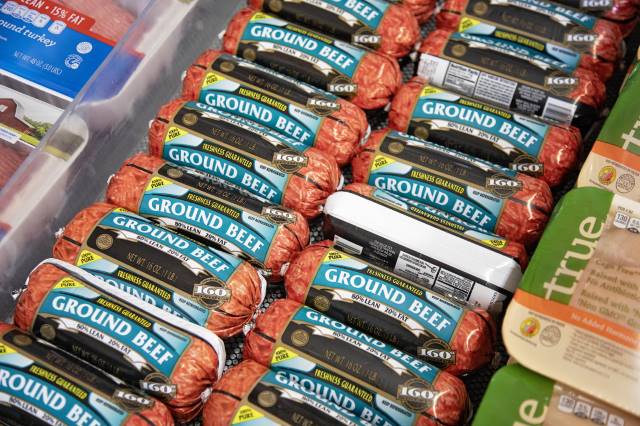Bump in beef sales to China expected to continue

By DANIEL GRANT
FarmWeek
Substantial growth of U.S. beef exports to China this year could be the start of a new, long-term trend rather than just a flash in the pan, according to a Rabobank report.
U.S. beef sales to China increased more than 1,000% in volume and value ($622.5 million) the first half of the year. And the market shows no signs of slowing, according to Don Close, senior vice president of RaboResearch and Animal Protein.
“It’s been an incredible story,” Close told FarmWeek. “If you look at the strength in cattle and beef prices globally, it all points back to just how much beef demand in China is driving the market.”
How did beef consumption become so much more popular in China, the world’s top producer and consumer of pork? Close believes several factors came together to enhance the shift.
“What’s driving it has been, first off, ASF (African swine fever). It drove hog and pork prices to levels that narrowed the price spread in China between beef and pork and stimulated a lot more (beef) sales,” Close said. “And then with COVID, people learned to start cooking (beef) at home, and that’s where consumption really ratcheted up. Traditionally, beef consumption in China was away from home.”
Improved market access under the Phase One Economic and Trade Agreement also helped position the U.S. as a greater player in the Chinese beef market. And, the Rabobank report predicts strong beef sales to China will continue.
“Given the circumstances of changing eating habits and changing taste preferences in China, and their inability to substantially increase their own cattle and beef production, (the Chinese) will be a major import player on the beef side for quite some time,” Close said.
Overall, U.S. beef exports increased 18% the first half of the year, compared to the same time last year, valued at a record $4.64 billion.
U.S. beef sales to the top two markets, Japan and South Korea, also increased while sales to Mexico, a critical destination for rounds and other underutilized cuts, increased 15% in volume the first half of the year, the U.S. Meat Export Federation reported.
Exports equated to about $351 per head of fed slaughter in June and could help drive better cattle price opportunities.
“There’s no doubt there’s been tremendous frustration in the domestic market. It all has to do with leverage,” Close said. “The available supply of market ready cattle overpowered our slaughter capacity and the leverage vastly shifted in favor of the packer. If you take the July cattle on feed and inventory reports, we’ve finally worked through the huge backlog of cattle and we’ve had three months of lower placements,” he continued. “As we get to the third and fourth quarters, the available supply of cattle will show a noticeable contraction,” which should support cattle prices.
Rabobank’s China beef market report also found the Chinese generally view cattle as a “sustainable superstar,” Close said.
“They’re placing cattle with small producers as income enhancements,” he added. “And they’re paying them to feed a lot of forages and field waste that they traditionally burned.”
This story was distributed through a cooperative project between Illinois Farm Bureau and the Illinois Press Association. For more food and farming news, visit FarmWeekNow.com.